Linux is an awesome operating system, but perhaps a little too different for Windows users. But what if there was a distro that looked like Windows? Step up Q4OS.
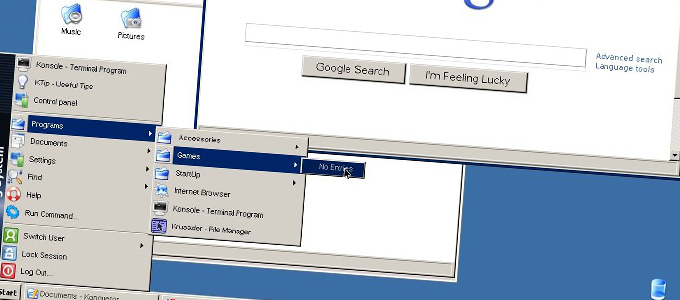
I have been recommending Linux to people for years, but despite the advances in user friendliness in recent years, most Windows users just find it too different to change too.
However, with Microsoft pulling the plug on Windows XP in April (check out my article, Life After XP: What Will You Do?), a lot of people are panicking about what to do. Most people still running Windows XP have older hardware that wouldn’t handle a newer version of Windows very well and might not be in a financial situation to buy a computer – after all, this is Low End PC.
So perhaps a Linux distro that looks like Windows could be the answer. I was recently pointed towards Q4OS, a lightweight Linux distro that looks like Windows 2000 or Windows XP with Classic shell. At first glance it looks very impressive. Let’s take a closer look.
Installation
Whether it is full install via CD or USB stick or Virtual install via ISO, it is pretty straightforward. It certainly beats Windows on that score.
There are two options, standard and unattended. I choose the standard, which was very easy. It used a text based alternative installer. It asked very few questions, mainly drive options and user account details, and the rest was automated.
Using VirtualBox, installation didn’t take very long at all; within 20 minutes I was staring at a log in screen. Using a Pentium 4 2.4 GHz laptop and a regular install from a CD, it took a little longer at 30 minutes.
Lets Have a Look
From the minute you log in you think, Wow, this looks like Windows. Task bar, Start Menu, and desktop icon placement all resemble Windows. Clicking the Start button brings up the familiar Start Menu, complete with Programs and Documents as well as Settings, which is a Control Panel replacement. The desktop has My Document, My Computer, and My Network and a shortcut to the Konquerer web browser.
The level of detail in replicating the old style Windows look is very impressive.
When I installed in Virtual Box, it detected I was doing so and asked if I wanted the Virtual Box Guest Additions installed. Clicking yes set it off installing them with very convincing Windows dialogue boxes.
Even when you go to shut down your machine, it follows the Windows idea, by bringing up the shutdown options and then fading the background to grey, just like Windows XP.
Requirements and Speed
The minimum requirements claim to run on a 300 MHz Pentium 2 with 128 MB RAM and 3 GB of hard drive space. This is similar to the original Windows XP requirements when it was first released in 2001. If this is true, this should translate in to a very smooth experience even on older hardware.
Up-to-date Windows XP barely runs on a sub-1 GHz machine with less than 1 GB of RAM these days, so Q4OS could breathe so life into your aging computer while maintaining a familiar look.
I had it running on my Early 2009 MacBook using Virtual Box with 512MB RAM, as well as a 2.4 GHz Pentium 4 with 768 MB RAM installed on a MicroSD card in a USB reader. It flew along.
I was using the regular version, but it is also available in a 64-bit edition.
It’s Not Windows
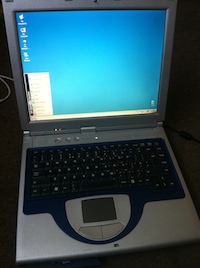 Okay, so while it looks as close to Windows as I have ever seen, it isn’t Windows. It won’t install your regular Windows apps, but there is a large selection of Linux apps available, and even some commercial developers are picking up on Linux.
Okay, so while it looks as close to Windows as I have ever seen, it isn’t Windows. It won’t install your regular Windows apps, but there is a large selection of Linux apps available, and even some commercial developers are picking up on Linux.
There is always the option to install Wine, a Linux tool to run Windows applications under Linux.
However, the majority of people these days use a computer for accessing the Internet, Facebook ,or playing online games. This can be done under Q4OS.
One of the biggest plus sides is that there is almost no need to install any anti-virus and anti-spyware software, one thing that clogs up a Windows machine. So you could enjoy a cleaner, safer computing environment.
For those less computer savvy who just want their familiar Start Menu and web browser, this could be a great option, especially as Windows XP becomes less and less supported and possibly more vulnerable.
Some users might not even notice it wasn’t Windows, the sort of people who just use it.
Regular Distro Look
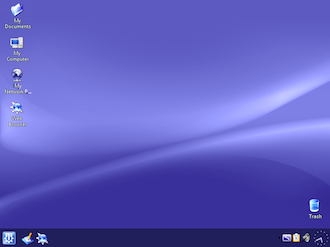 Under the hood it is a Debian based distro with Trinity a tweaked KDE interface and there is an option to turn off the Windows look and use a regular KDE look.
Under the hood it is a Debian based distro with Trinity a tweaked KDE interface and there is an option to turn off the Windows look and use a regular KDE look.
I have been focusing on Windows articles lately such as Life After XP and Windows 10: A Turn Around for Microsoft or More of the Same?. It is an interesting time in the Windows world.
Could Microsoft move away from the NT base in favour for a *nix one. While not very likely, and if they do, it will be long while yet. It is an interesting idea.
I don’t know any Linux fans who wish their distro would look like Windows. Most Linux users – as with Mac users – don’t like Windows. If they did, they would use it. Q4OS seems to be aimed at Windows users who need or want to move from Windows but prefer a familiar look. Or perhaps it is just a niche project to see people’s reaction.
Still In Beta
Q4OS isn’t finished. It is still in beta, but what I have seen so far is very impressive. It is very stable, and automatic hardware detection is brilliant.
Go ahead. Check it out. I shall be keeping an eye on it.
Follow Simon Royal on Twitter or send him an Email.
Like what you have read? Send Simon a donation via Tip Jar.
keywords: #windowsxp #xp #linux #q4os #techspectrum #simonroyal
short link: http://goo.gl/d8cPWO
searchword: q4os

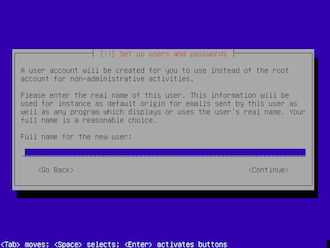
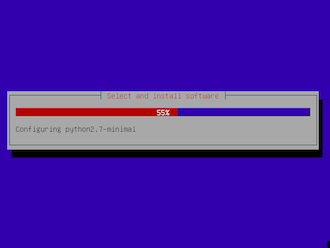
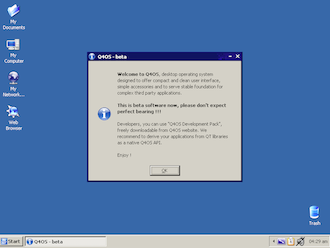
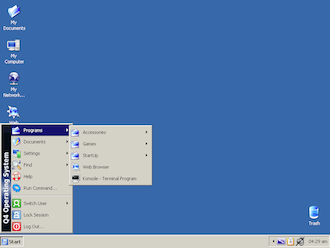

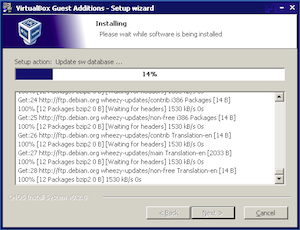
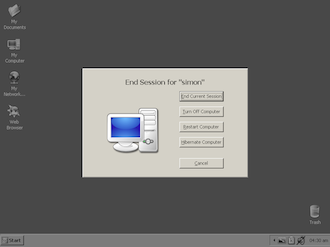

I think this is a great idea. With the demise of Windows XP, it’s good that there is a look-alike Linux alternative. Lubuntu’s standard desktop is already very similar to the classic Windows desktop, but this project takes it a step further. I just hope this project doesn’t meet the same fate as Lindows or PearOS.